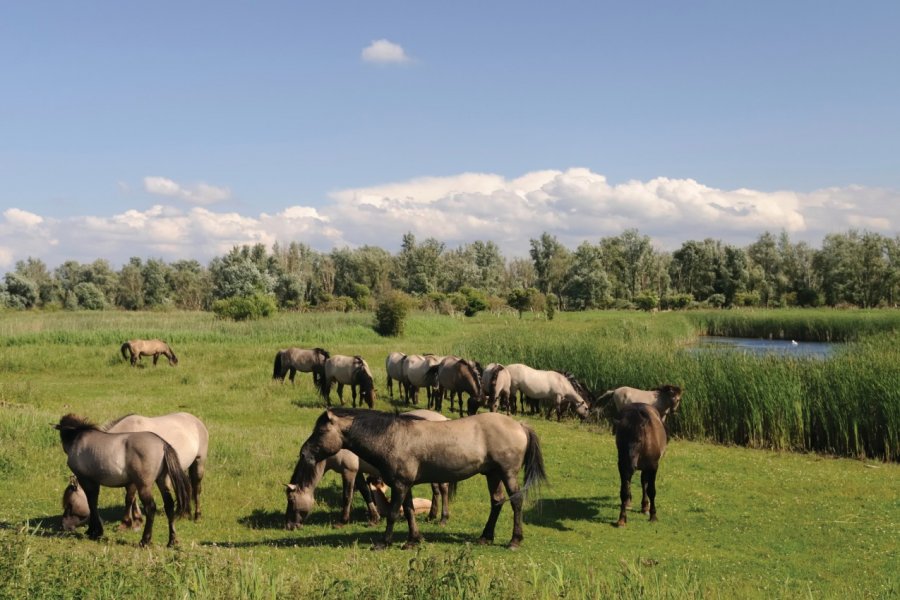Travel Guide Parc National De Hortobagy
Find an accommodation
Advertising
The Hortobágy National Park, protected since 1973, covers 630 km ². This long-lived plain was devastated first by the tatar invasions, and then fell under Turkish rule. In the Middle Ages, its population was decimated by epidemics of plague and malaria.In the infinity of this large steppe, the largest of Central Europe, the flat fields run up to the Carpathians, powdery summer, muddy in the winter. Unlike fertile wheat fields and roads lined with acacias from the Greater Plain to the west, between the Danube and the Tisza, Hortobágy is arid land of small pastures. In the small hamlets which straddle this large plain sparingly, the houses are covered with reeds, bleached with lime inside and outside, and flanked by the well-known balancier well of puszta. Today, pastures that have kept on alkaline soil are again used for the extensive breeding of herds of horses and grey horse, raised as previously. During the warmer summer period, when the sun at the zenith flares the horizon and cracking the alkaline soil, you can see délibáb or "midi figures" or mirages of heat. This semi-desert plain forms a bird rich ornithological reserve like the black and white tern, or the stork.
What to visit Parc National De Hortobagy?
Suggested addresses Parc National De Hortobagy
Weather at the moment
Advertising
Organize your trip with our partners Parc National De Hortobagy
Transportation
Book your plane tickets
Car Rental
Boat rental
Accommodation & stays
Find a hotel
Holiday rental
Find your campsite
Tailor-made trip
Immersion travel
Services / On site
Activities & visits
Find a doctor
Parc National De Hortobagy travel inspiration
Find unique Stay Offers with our Partners
Pictures and images Parc National De Hortobagy
Other destinations nearby Parc National De Hortobagy
5 km away
25 km away






